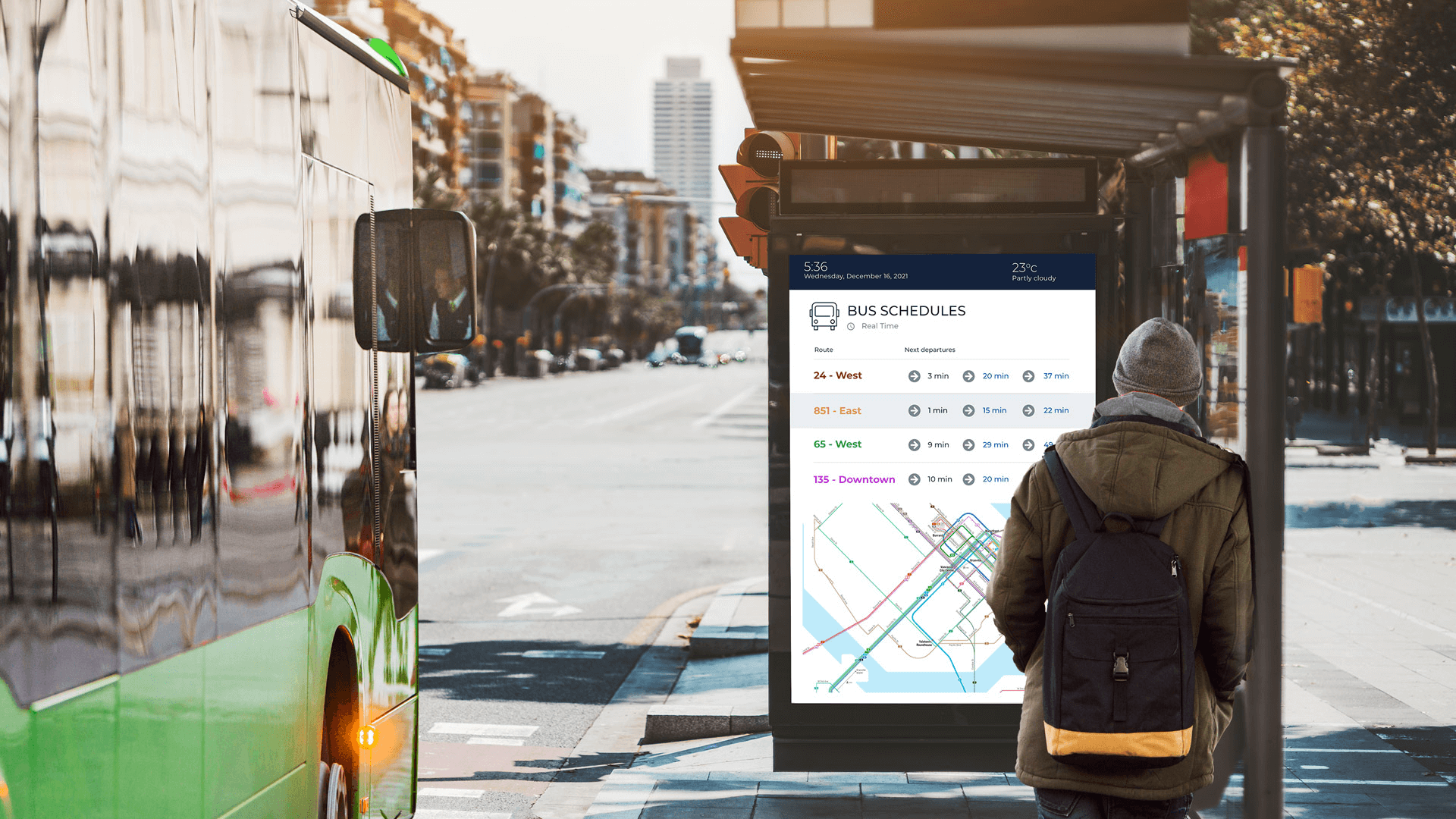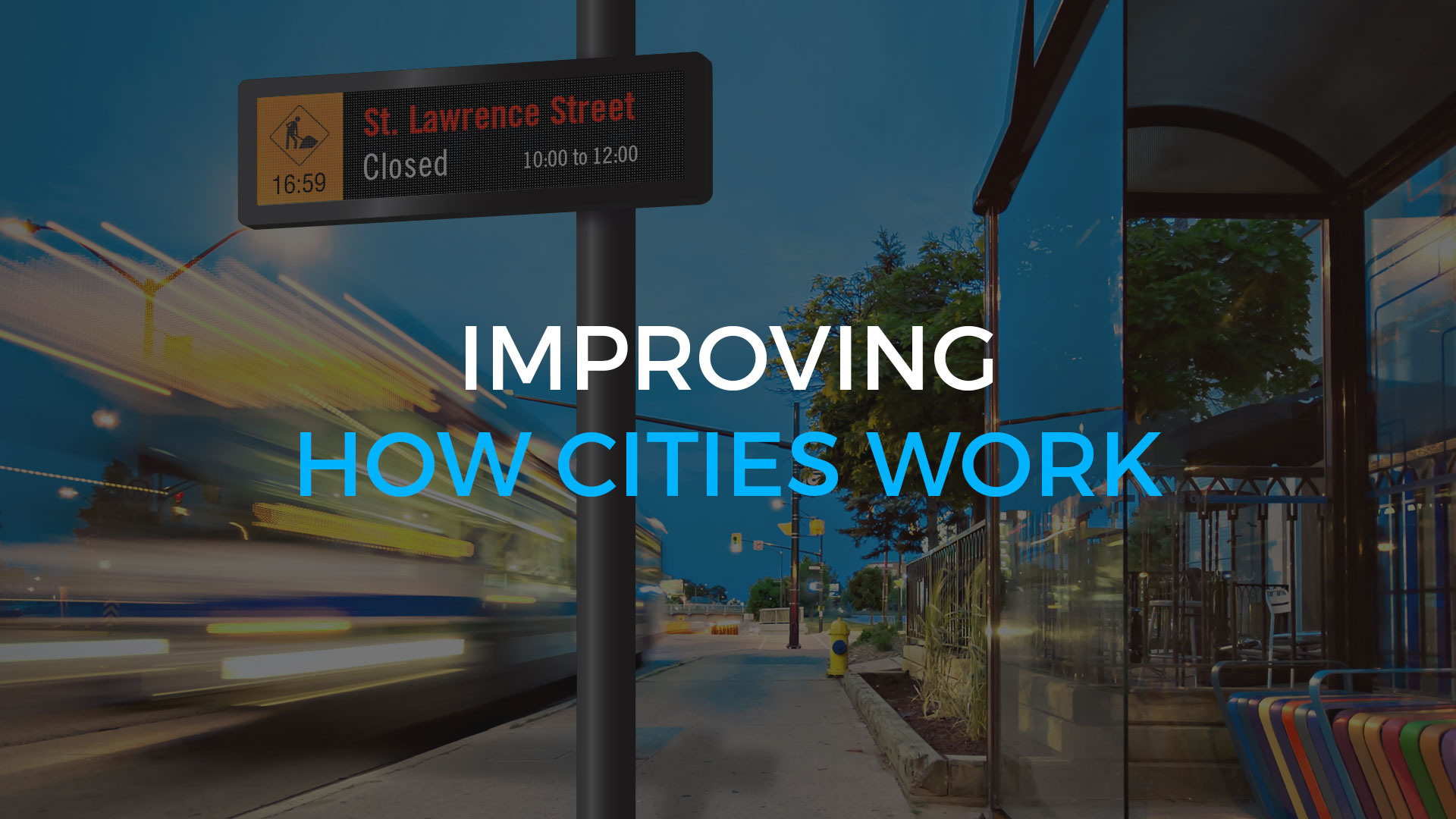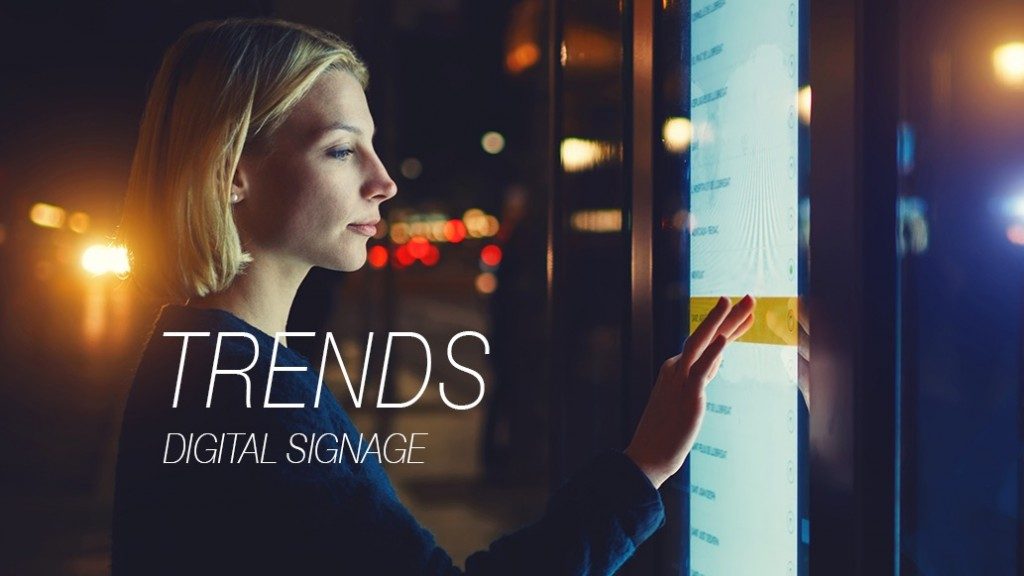More and more, digital displays are used to share information with public transport users – at train stations, subway stations, bus shelters, etc. These displays are equipped with digital signage software to improve communications with customers.
Different types of information to share
Real-time user information
Dynamic signage for public transportation enable sharing important information with users in real time. Make waiting times seem shorter for your users and reduce their stress levels by displaying the times when the next buses will arrive, the current service status and any expected delays. Providing this information empowers users and helps them choose the best route. For example, if a user has to choose between two different buses that stop near their destination, they can take the one leaving earlier. If users are informed a bus is delayed or is almost filled to capacity, they can either wait for the next one or use the extra time to do something else.
Emergency messages
Digital signage monitors installed in bus shelters or subway stations can be used to share emergency messages, which can be activated automatically through an alert system or remotely by using a mobile device, a tablet or a computer. These messages help users find the nearest exit to leave the premises as quickly and as safely as possible. It is also possible to share messages in stations or at nearby stops to inform users that the metro will not stop at the next station. When an Amber alert is triggered, it can be shared on the entire digital signage network. In short, different messages can be shared on all of the displays or on some of them, according to their location, to ensure the information is accurate wherever the users are located.
General interest information
Inform users about various topics. For example, you can share answers to frequently asked questions to help you improve the users’ experience. You can also share other types of content, such as the news, sanitary guidelines, new features for your transport network (e.g., free Wi-Fi), regulations, prices, etc. These messages can be shared in a specific zone on your screens, or shown alternatively in other content types.
Advertisement
A section of the displays can be used to share ads. If the ads are properly adapted to the target audience, users could be interested to find out more about nearby museums, restaurants, shows, etc., and the choice of organisations you can promote is entirely up to you. Furthermore, this space can also be leveraged to share ads about your transportation network. This is a great benefit, as it will help you improve the return on your investment in digital displays.
Digital signage software helps keep users informed and improve their overall experience. For public transport organisations, this software is easy to manage, and the signage costs can be offset by running ads.






